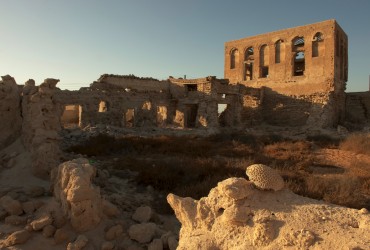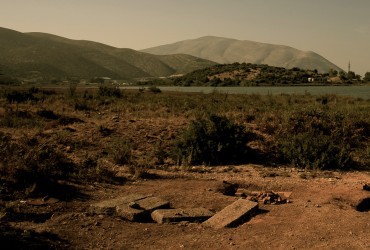In Ali Baba’s cave
On a side of the Creek, a glass building towers the place. It is rather small compared to the other giant buildings surrounding it. We have an appointment on the 15th floor of Dubai’s national bank. The heavy circular reinforced door pivots on its hinges without making a sound, I can’t believe my eyes: we just entered Ali Baba’s cave! Pearls are everywhere. There are thousands of them, millions even… Inside some bags are plates, pearls at their natural state, collars… We are at the heart of the biggest natural pearl reserve of the world! This extraordinary museum was opened in 2003 and it is only possible to access it by invitation. Jamily Bu-Eisha, the treasure keeper, greets us in her impeccable chador. She tells us:
«Ali Bin Abdullah Al Owais was born in 1925. He was a merchant and passionate about pearls, he collected them until his death in 2000. His son, the sultan Bin Ali Al Owais pursued his work and collected all along his existence a fabulous collection of natural pearls, probably the world’s biggest, and then gave it to the people of the Gulf, under the safekeeping of our bank.»
While pensively scrutinizing a handful of pearls, Victor tells me that in the local myths and legends, these are associated to longevity, beauty and perfection. They were very expensive and precious. For the men gathering pearls, it was more than an artefact; it was a lifestyle. With few resources on the land, these pearls were an incredible opportunity offered by the sea. «There is also a saying that the white color of the United Arab Emirates flag is also a tribute to the color of the original pearl», Jamila tells us.
I also learn that this market attracted divers from all around the world: from Socotra Island, Yemen or Oman, in the meantime merchants from India, Iran or from other Arabian countries would land in Dubai to sell textiles, spices and rice. Consequently the Hindus controlled the pearl industry during the 19th century, mainly exporting to Mumbai (Bombay), the biggest pearl market of the world. The fruit of these miraculous catches would rarely stay in the Persian Gulf were very few people could afford them. Most of it was imported in Persia, Turkey, India and sold on the Chinese and European markets. The industry boomed with the integration on the global market, particularly during the 18th century.
«You know, tells us Jamila that likes to sprinkle her stories with meaningful numbers, the divers were not very well paid for this raw material if we consider the value of these pearls. From 1790 to 1905, their price has been multiplied by six! On the Mumbai market in 1917, a simple gram of Persian pearl was worth 320 grams of gold or 7,7 kilos of silver. It’s during this same year that Cartier was able to buy an entire building in Manhattan with a single double row pearl necklace, worth a staggering 1.2 million of dollars! Between 1830 and 1900 the pearls from the Gulf generated annual revenue of 1.75 million dollars. During the 20th century, this revenue increased to 4 millions…»
To satisfy the demand, the number of ships has increased, from 3000 in 1810 to 4500 90 years later. In 1907, Bahrain had more than 2000. In Dubai, the number tripled, placing the port as a major business centre. In 1878, approximately 35’000 men worked in the Gulf’s pearl business. At the beginning of the 20th century, they were 74’000. The male population of Abu Dhabi and Qatar was dependant to the pearl business, as more than 50% of the population of Kuwait, Sarjah and Umm al Qaiwain.
But at the end of the 19th century, the Japanese Kokichi Mikimoto discovered how to create pearls in crops. Consequently, by 1926, cultured pearls invaded the world by millions. The traditional fishermen were ruined. Here in Dubai, some people became extremely poor, and find themselves sometimes in a precarious state. The last pearl fleet went at sea in 1949 when pearls had already lost 90% of their value.
Fortunately, in 1932, the Standard Oil Company discovers oil in Bahrain. The exploration revealt huge oil fields scattered all around. Since the sixties, the first exportations have brought to the Emirates a new flourishing source of wealth. The economy is still closely linked to trades. From the pearl to the oil business, a few years went by but the negotiation process stayed the same. The white gold was simply replaced by black gold.
Impressed by all these pearls, I find myself under the implacable mirage creating sun. I find myself dreaming about all these oysters seen during our dives. Since the time they haven’t been collected anymore, there isn’t any doubt that some of them hold the biggest nacre treasure…





